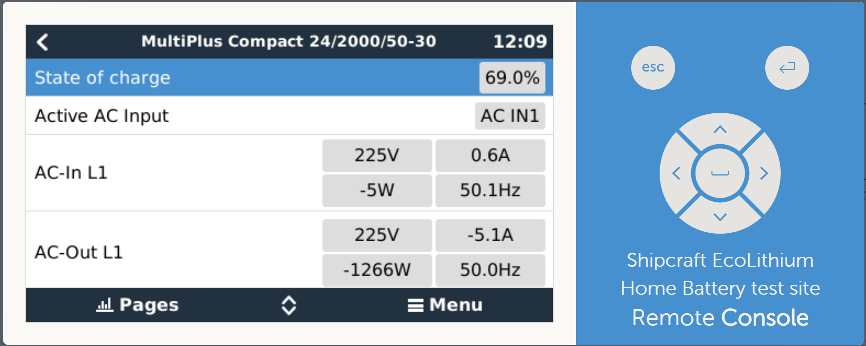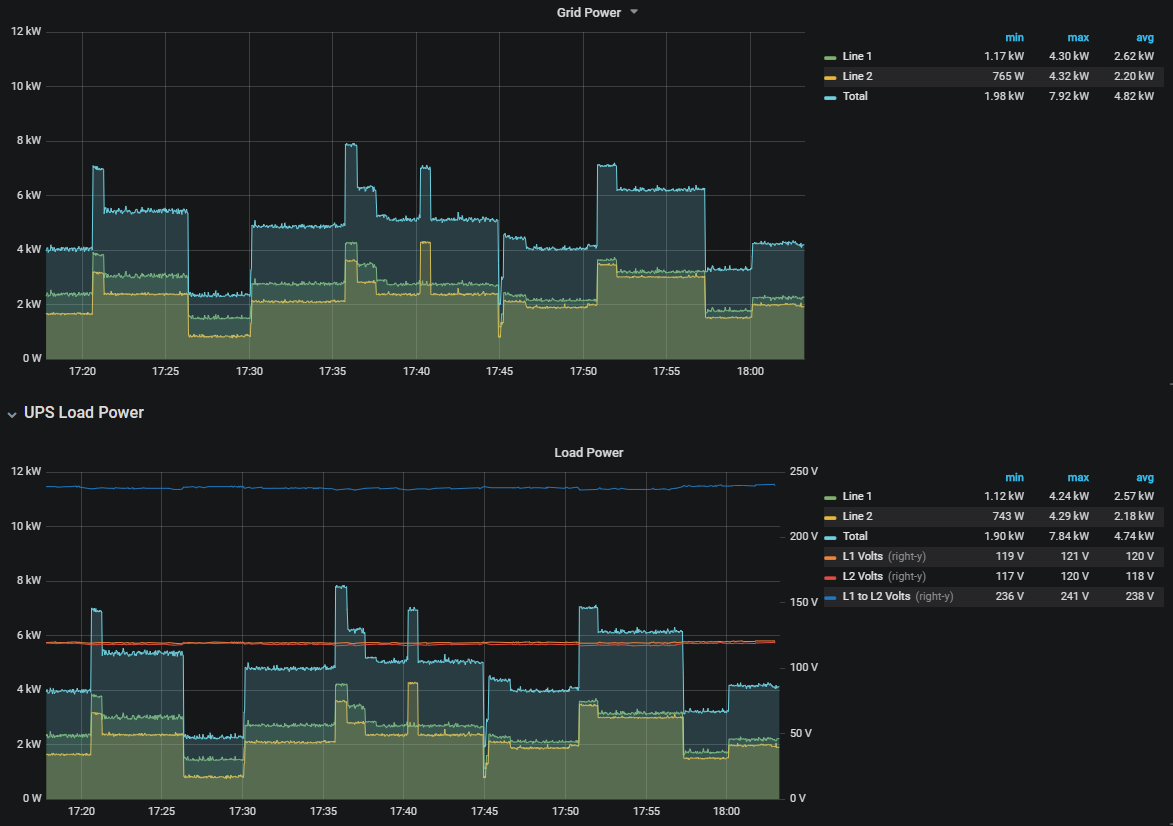Quattro 5K with periodic resistive heat loads which exceed the input current limit. Sometimes a rapid jumping back and forth occurs between "power assist" and "bulk" modes. This results in a very rapid drop of battery SOC, much more than what seems reasonable. SOC recovers very fast afterward.
The highest output power peak I see there is 8956W, and that is with a 50A input current limit
graph:
zoomed in:
output power (same timespan as image above):
Battery effect !!
It has been doing this for some time now, maybe once per day. No complaints from users, everything seems to be fine on the output. Anyone recognize that load profile? Could that be a microwave?


